Now that classes have finished for the summer, there’s time to catch our breath and look back at some of the trips we took last term. In April, we visited the Pearse Museum and St. Enda’s Park in Rathfarnham. Thanks to Brother Gerry Stewart and Laura Butterly for the following reviews and to Frances Parnell and Rachel McNicholl for the postscript.
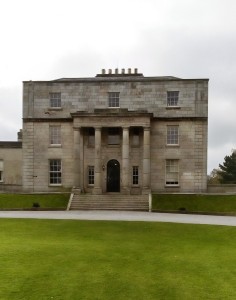
St Enda’s Museum (photo by Diane Considine)
Quiet Revolution
Brother Gerry Stewart
Our memorable visit to the Pearse Museum and St Enda’s Park in Rathfarnham took place on 22 April 2016. After the journey through Dublin’s traffic-laden streets, it was so satisfying to experience the peace and quiet of the spacious grounds of The Hermitage, the eighteenth-century house to which Patrick Pearse moved St Enda’s from its original Ranelagh location. Here he continued his educational dream for an Irish Ireland. The house also became Pearse’s home, and his mother,brother and sisters helped with the running of the school. It is now a museum and park run by the Office of Public Works.
Walled garden
A tour of the walled garden was first on our agenda. It was here that Pearse’s students were given plots and taught how to grow the produce required for their sustenance. Alan, the gardener, expertly explained the management of such a garden, including the benefit of high walls for shelter and a south-facing brick wall that radiates heat stored during the day, and he talked us through the most suitable locations for trees, shrubs and flowers.
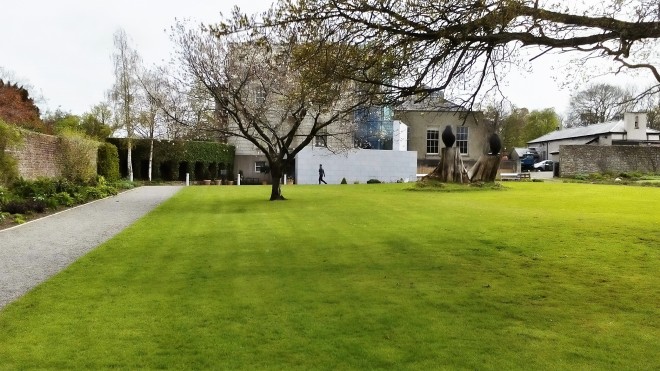
Walled garden, St. Enda’s Park (photo by Diane Considine)
Gaelic education alive and well
As we entered the house, a uniformed student who held the door for the stragglers among us was pleasantly surprised when I said “Go raibh maith agat”, and we both enjoyed a wee chat in Irish. He was from Coláiste Pobal Rath Cairn, one of the many colleges and schools that organise group tours to this hallowed place, and I suddenly realised that Pearse’s ideal of a more practical Gaelic education for the young was still relevant in our own times.
A special past
Our tour of the museum itself proved just as interesting as the gardens. Our eloquent guide explained the history of the building, its former owners, and their impact on its development.
Visiting the historic rooms where the Pearse brothers, their fellow teachers and students once lived and worked, and listening to our guide’s anecdotes relating to furniture, fittings, artefacts and art, we were placed gently in that special past.The dormitory, which included four of the original beds, was a nostalgic reminder of my own times in another “hermitage”, the Marist house of formation in Athlone, Our Lady’s Hermitage.
With time running out, we hastened to our bus with our bundle of memories, to travel back through still busy streets to our own quiet haven in Ringsend College.
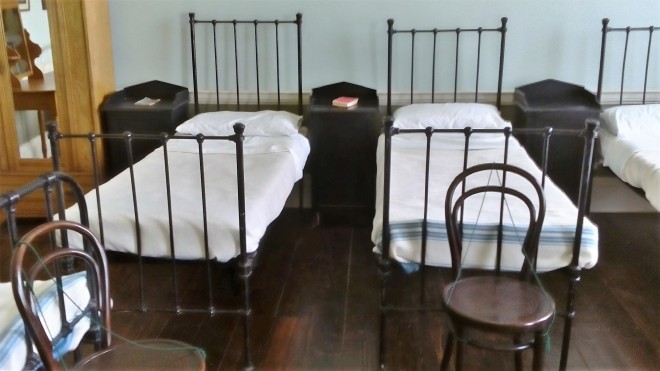
Dormitory, St Enda’s Museum (photo by Diane Considine)
A Step Back in Time
Laura Butterly
I visited the Pearse Museum and St Enda’s Park in April with a group organised by Ringsend Adult Education Service. The great house, The Hermitage, was built in 1780 for Edward Hudson, a successful Dublin dentist at that time. In 1910 Padraig Pearse moved his school, St Enda’s (Scoil Éanna) from Cullenswood House on Oakley Road, Ranelagh, Dublin, to this site on Grange Road, Rathfarnham. The school was bilingual, with teaching in English and Irish.
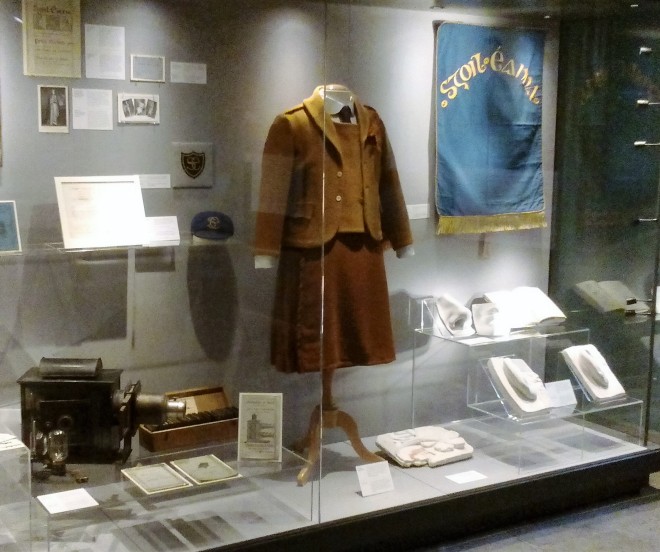
Pearse Museum (photo by Diane Considine)
Garden, coffee shop, museum
On arrival, we got a guided tour of the walled garden. The gardener explained the whole layout of this beautiful and simple garden and told us what the walled garden was used for during Pearse’s time. I enjoyed this very much.
After the garden tour I stopped off at the coffee shop for some light refreshments before embarking on the tour of the museum. This guided tour was also very interesting and will take you back in time.
A real sense of home and school
The house was also Padraig Pearse’s family home and you get a real sense of what life must have been like during that period. His mother, brother and sisters all helped to run the school. You can see Pearse’s study and the family sitting room. You also see the school dormitory, study hall and chapel.
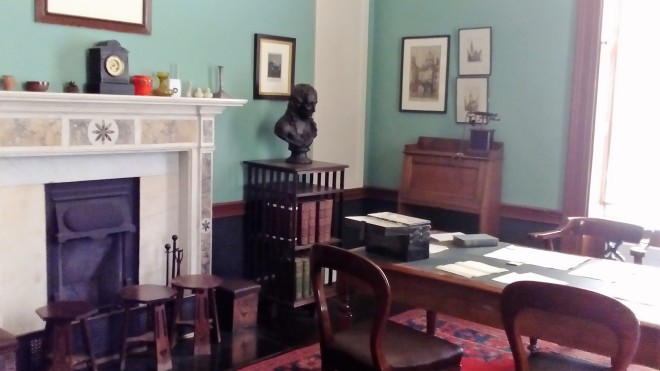
The Study, St. Enda’s (photo by Diane Considine)
A public treasure
In 1968, following the death of Pearse’s sister Margaret Pearse, the house was left to the State. The Office of Public Works (OPW) is now in charge. The house is open to the public and entry is free. It is definitely well worth a visit.
Sources:
The Office of Public Works: Pearse Museum
Postscript
by Frances Parnell and Rachel McNicholl
The week after our visit to St Enda’s, our Ringsend group had a lively discussion about one aspect of the history. Pearse’s school was a private, fee-paying school, which meant that only families who had enough money could send their sons there to benefit from Pearse’s radical and progressive methods.
Our tour guide at the Pearse Museum had told us that there were two scholarships for boys fr the Irish-speaking west of Ireland. We wondered whether there had been any scholarships for boys from inner-city Dublin, which had the worst slums in Europe at the time. We decided to follow this up.
In answer to an email from Frances Parnell, the Pearse Museum said they were not aware of any scholarships for inner-city children specifically, but that Pearse may have offered scholarships to other boys (besides those from the Gaeltacht) at his own discretion. Through a follow-up phone call to the museum, Frances learned that Pearse had offered a scholarship to a lad from the Cullenswood area when the school was in Cullenswood House.
Of course, all secondary schools would have been private in Pearse’s time. But even after Ireland gained independence, it was several decades before free secondary education came along. It was introduced in 1967, one year after the fiftieth anniversary of the Rising.
Not everyone who was privileged enough to be sent there liked St Enda’s. It is particularly ironic that union leader James Larkin’s sons hated the school. They said food was scarce and “there was a great belief in much physical exercise to keep oneself warm.”
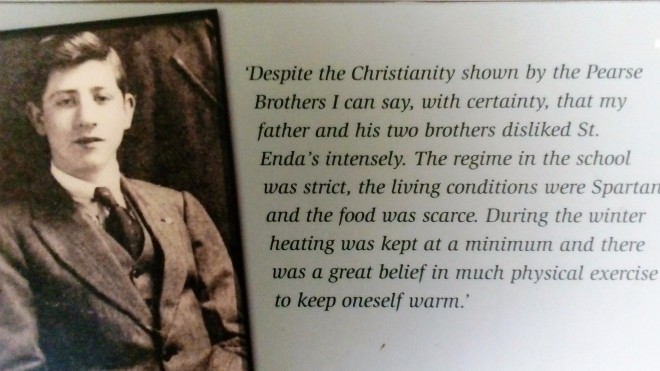
(photo by Diane Considine)
